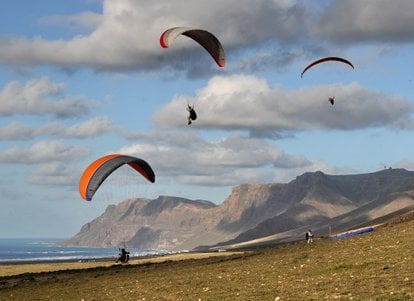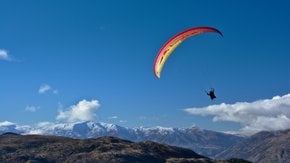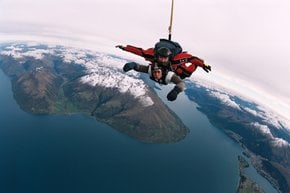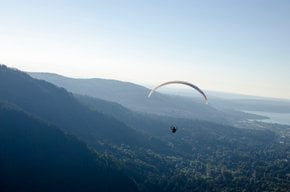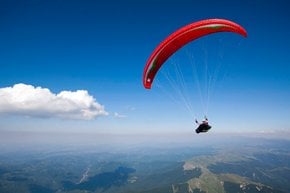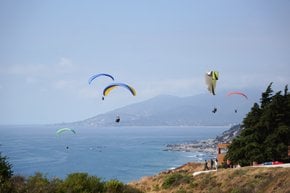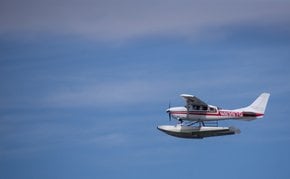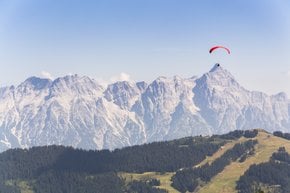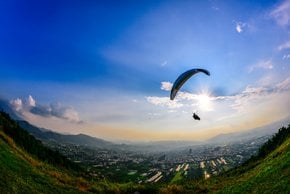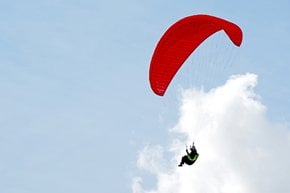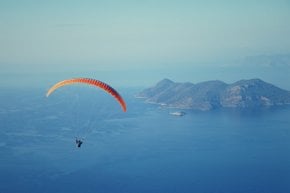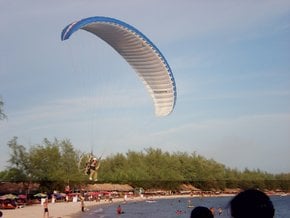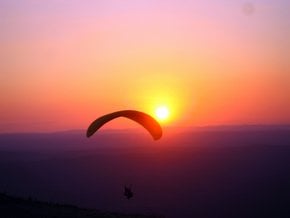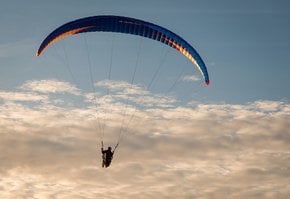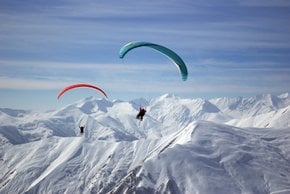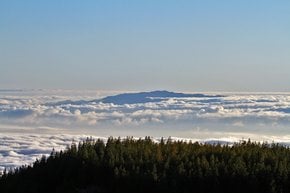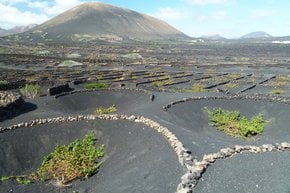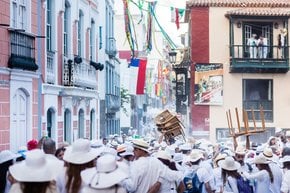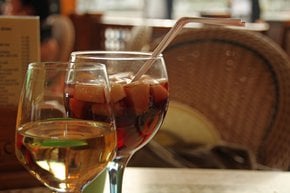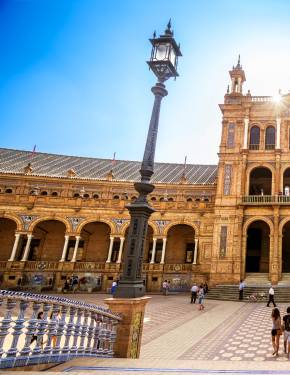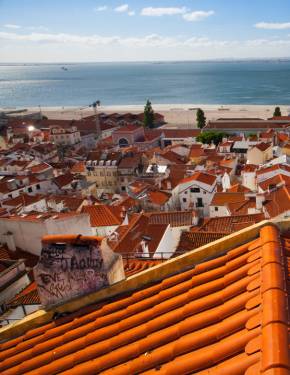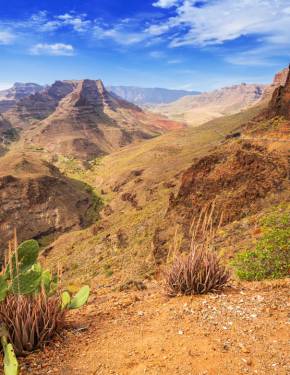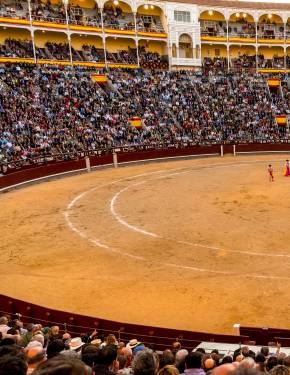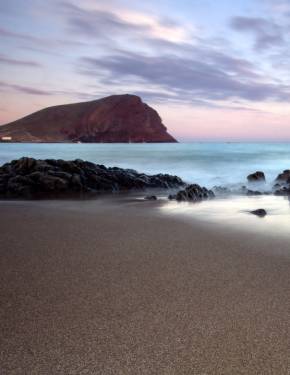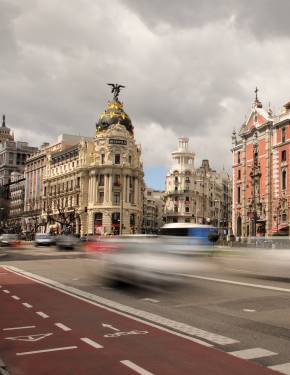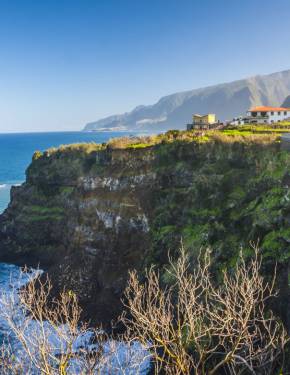Paragliding in Canary Islands 2025-2026
Paragliding over Canary islands may become one of the most exciting activities you've ever tried
Best time: October–March
Amazing flights from the highest peaks to the most beautiful beaches can be done in the Canary Islands. Various mountainsides, ravines, and peaks on each of the seven islands offer high-quality take-off sites. The presence of constant Trade winds will ensure you of a flight to enjoy. The island of Tenerife is a very popular spot for this activity, as it is home to some of the best areas for paragliding in the Canary Islands. Every day people set off from Adeje’s mountains. Here the most popular spot is Taucho. But this destination is recommended only for the most experienced paragliders. The north of Tenerife is home to another great paragliding spot—La Corona. The flight starts at 785 metres above sea level, taking you over Los Realejos to the beach of El Socorro with its soft black sand. Once this area was chosen for hosting the most important annual paragliding and free flight festival in the world—Parafest. The festival settled here for several years. Izaña, located in the centre of Tenerife, offers one of the best flights with the take offs at the height of 2,300 metres above sea level. From the highest peaks of the Teide National Park, you can take a calm 45-minute flight to the beautiful Orotava Valley and tourist resort of Puerto de la Cruz. More than 40 different locations in Tenerife are ideal for paragliding, so you can definitely find something for yourself.
The island of La Palma has around eight official take-offs and only one beach suitable for landing. They are all mainly concentrated on the west of the island. The main flying area can be found in the municipality of Puntallana. The take off point is located at a height of 430 metres. The landing can be performed near the road or on Nogales beach. There are strong north winds, which may make this area rather turbulent. The most popular flying spot on La Palma is Puerto Naos. Here you'll find a great combination of flying and unforgettable landscapes. The take off is suitable for both experts and beginners, while landings take place near the promenade. Only in emergency cases, you can land on the beach. Lanzarote island is considered the best in some regards. The constant west-northwest winds make it possible to do sport like paragliding. The take-off spots are at an altitude of 450 metres, and the landings are quite easy due to the abundance of flat areas where they can be performed. For any of the islands you choose, the most suitable flying conditions can be found during the winter, starting from October and lasting till March.

